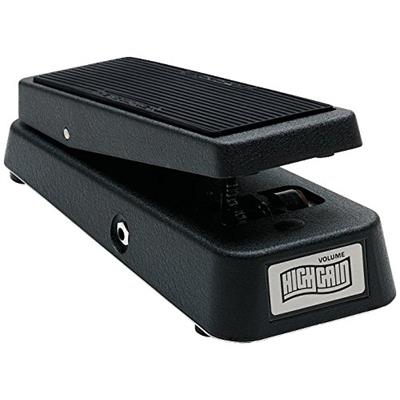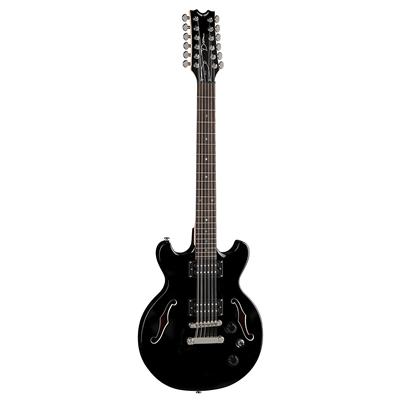When you are a beginner, you cannot help but wonder: does a compressor pedal do anything to your sound? What is all the fuss about? It is definitely one of those pedals that you have to plug in and unplug in order to see the difference it makes. But once you do that, you cannot go back. Compressor pedals change the quality of your sound so profoundly, that you will start contemplating how you survived without them.
I will confess, that I am guilty of being narrow-minded about these bad boys as well. Don’t worry, though, it is the kind of ignorance, we can all easily redress. I will make a bold statement here, but investing in the best compressor pedal was the best thing that happened to my sound. Now I will help you choose yours according to your music, preferences, and budget and give you all the information you need in order to avoid being taken in by retailers.
What’s The Best Compressor Pedal
| Image | Amplifier Model | ||
|---|---|---|---|
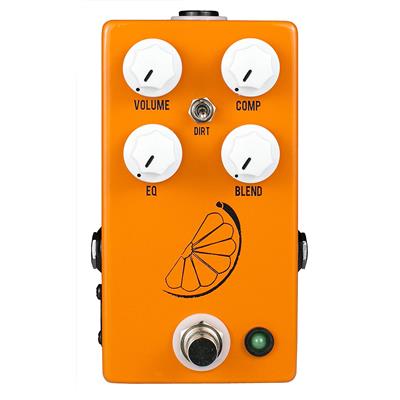 | JHS Pulp 'N' Peel V4 Compressor/Preamp Pedal |  (5 / 5) (5 / 5) | Check on Amazon |
 | Wampler EGOCOMPRESSOR Compressor Pedal |  (4.9 / 5) (4.9 / 5) | Check on Amazon |
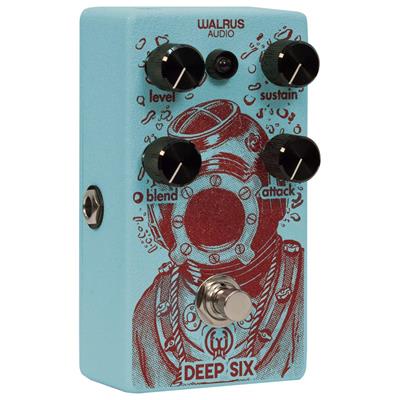 | Walrus Audio Deep Six Compressor |  (4.9 / 5) (4.9 / 5) | Check on Amazon |
 | Boss CS-3 Compressor/Sustainer Pedal |  (4.8 / 5) (4.8 / 5) | Check on Amazon |
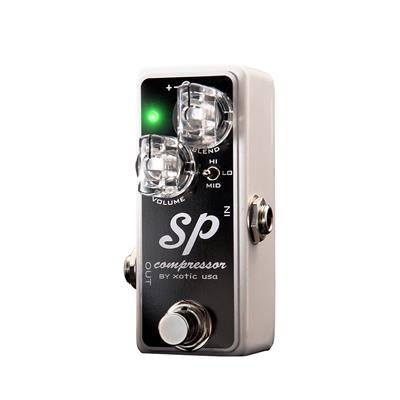 | Xotic Effects SP Compressor Effect Pedal |  (4.8 / 5) (4.8 / 5) | Check on Amazon |
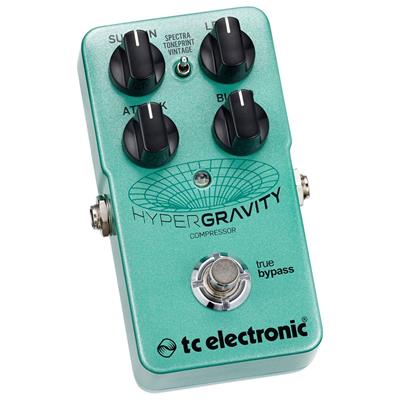 | TC Electronic HyperGravity Compressor |  (4.8 / 5) (4.8 / 5) | Check on Amazon |
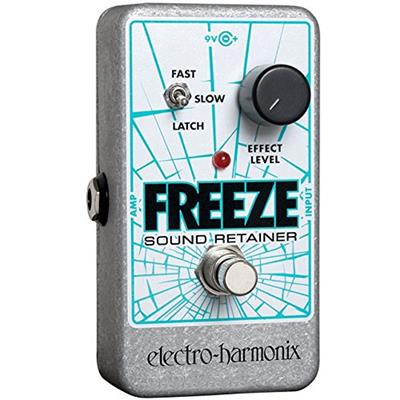 | Electro-Harmonix Freeze Sound Retainer Compression Pedal |  (4.7 / 5) (4.7 / 5) | Check on Amazon |
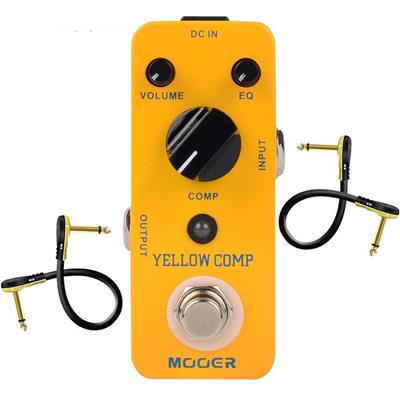 | Mooer MCS2 Yellow Compression Effects Pedal |  (4.7 / 5) (4.7 / 5) | Check on Amazon |
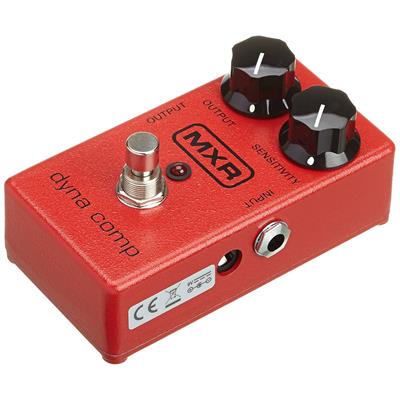 | MXR M102 Dyna Comp Compressor Pedal |  (4.7 / 5) (4.7 / 5) | Check on Amazon |
 | Donner Compressor Pedal Ultimate Comp |  (4.7 / 5) (4.7 / 5) | Check on Amazon |
JHS Pulp ‘N’ Peel V4 Compressor/Preamp Pedal

The Pulp ‘N’ Peel V4 compresses your tones beautifully. Whether you want to get the tone right or warm up your sound and add some grind to it, this pedal will be at your service. It provides you with transparent compression without changing the original sound. Pulp ‘N’ Peel V4 comes with a little Dirt toggle, which allows you to add a bit of grit to your music. Its active EQ control can shape your sound by cutting or boosting the high end, while Blend knob will find a silver lining between your compressed and uncompressed tones. Additionally, it has Gain control at the side of the pedal, which will make sure that unwanted tones will not slide. It can act as a true or buffered bypass. Pulp ‘N’ Peel V4 will add precision to your sustain and define each of your tones.
Pros:
- Works with various instruments
- Natural sound
- You can use it as a true or buffered bypass
Cons:
- Cannot be powered by battery
Wampler EGOCOMPRESSOR Compressor Pedal

The Wampler Ego Compressor is one of the most versatile pedals on the market. It offers transparency and different rates of sustain, while maintaining the clarity of your tones. This pedal gives you full control so your boosted sound is not deprived of the dynamics and expression. The controls on Ego Compressor are quite simple: Blend balances the rate of compression and gives you an option of adding unaffected signal back into the overall output; Sustain modifies the length of the maintained compressed signal, so higher sustain settings will let your tones be on for a long time (be careful: higher sustain means increased noise floor); Tone adds presence and precision to your sound; Attack controls if the compression will take effect right away or not. Last but not least, Volume monitors the overall output of the pedal. All in all, Ego Compressor lets you craft your sound with a lot of precision while boosting and expressing it more.
Pros:
- Incredibly transparent
- Versatile
- Easy to operate
Cons:
- Takes time to adjust it to your sound
Walrus Audio Deep Six Compressor

The Deep Six offers a studio-quality compression in the form of a stompbox. It comes with several knobs, which are extremely easy to adjust and allow you to take full control of your tone. Blend and Attack let you use your instruments with the maximum output, canceling out any distortion. You can use Level to enhance the output and add sustain to your sound. At a lower rate, Sustain will touch up your sound a bit and saturate it with clarity, while at a higher rate it can give you the Clapton and Santana tones. The Deep Six gives life and soul to your sound, without compressing it too much. You can easily adapt it to your taste and really let your music shine.
Pros:
- Viable blend knob
- Natural sound
- Even rhythm
- Gives extra boost to your leads
Cons:
- It does not display if compression is taking place or not (which is not that big of a deal after all)
Boss CS-3 Compressor/Sustainer Pedal

BOSS CS-3 is a two-in-one compressor/sustainer pedal, which lets you shape your sound professionally. By compressing higher frequency signals and boosting lower ones, this pedal gives off a quality sound. You can create those smooth tones by adjusting simple knobs. You can control how much effect is added to the overall output by twisting the Level knob. Increasing it reduces the clarity of your original signal.
Tone lets you adjust the range of tones that will be affected when using the pedal. You can modify the extent of the attack generated by the pedal with the Attack knob, which helps your tone stand out in the mix when needed. Sustain control lets you enhance the length of the signal tones. CS-3 provides you with a lot of versatility since it works equally well with clean and distorted signals. This pedal combines all the features that a well-balanced compressor should have.
Pros:
- Built like a tank
- Practicable
- Great bang for the buck
Cons:
- Can develop some hiss
- Not fully transparent
Xotic Effects SP Compressor Effect Pedal

Xotic SP Compressor is different from its competitors since it is based on the same OTA (operational transconductance amplifier) technology as the Ross Compressor. This means that it guarantees quality sound and balanced compression. Featuring true bypass, this pedal will not interfere with other signals in a tuned-off state. Xotic SP Compressor takes tone shaping to a whole new level. With 4 internal switches, 2 knobs on the exterior and a toggle switch, it gives you all the power you need.
Let’s start with the outer knobs: Volume boosts your tone, while Blend helps you find the silver lining between dry and compressed signals. Toggle sets the amount of compression added to your sound. You have even broader options when it comes to internal dip switches: when activated, Attack/Release accelerates the attack and release times, giving you some rhythm of country music. High Cut Filter really makes your sound shine. Input Pad dip switch makes sure that the signal is not clipped when you dial in strong tones on your instrument. What else could you wish for? If you want a small compressor pedal, then it’s a perfect choice.
Pros:
- Classic vintage tones
- Compact design
- Full range of control
Cons:
- Transparent controls might be difficult to see
- Not all switches are easily accessible
TC Electronic HyperGravity Compressor

TC Electronic HyperGravity is one of those pedals, which are too good to be true. When I say that this pedal is versatile, I mean that it offers up to 35 different parameters (with the help of the beloved TonePrint Editor). Being extremely digital, this pedal is equipped with four main controls and a toggle switch. It is known to be multiband, preventing any high tones from getting sucked. Just like many other pedals on the market, HyperGravity comes with Sustain, Blend, Attack and Level knobs, adjusting different qualities of your tone.
The tiny toggle is where things get interesting. It has three modes: Spectra is extremely transparent, as it balances out all ranges of your signal without changing them; by contrast, Vintage mode is quite dark, but sounds very pleasing and unique; TonePrint gives you an opportunity to lose yourself in the abundance of choices. If you want to step up your game, connect this pedal to the TonePrint editor and you will be left with astounding sound and feature options.
Pros:
- Extremely versatile
- Compact design
- Reliable
- Lively sound
Cons:
- Some features might be overpowering
- Takes time to find suitable adjustments
Electro-Harmonix Freeze Sound Retainer Compression Pedal

EHX Freeze is more of a sustainer, rather than a classic compressor. It can literally sustain each and every note you play by borrowing certain features of delays or loopers. When it comes to the effect itself, it is quite different from other compressors. Once you hit the pedal and start playing, EHX will immediately catch your tones and play them as a background afterward. The features of this playback can be controlled with three modes: in the Fast mode, sustain starts to appear as soon as you press the footswitch and continues until you release it; in Slow mode, the signal comes through little by little, starts to sustain and then fades away (the duration of fade is adjustable); in Latch mode, the sustain of the signal continues even after releasing the footswitch, giving way to other sustained signals. One other knob on this pedal is Effect Level, which controls the output volume. If you want a compressor, which is more adventurous than its typical rivals, definitely go for EHX Freeze.
Pros:
- Not your classic compressor
- Great sound
- Easy to use and control
Cons:
- You cannot separate dry and “frozen” with individual outputs
- One trick pony
Mooer MCS2 Yellow Compression Effects Pedal

The Mooer MCS2 is a very transparent compression pedal. It enhances and corrects the tone, without adding color to it, so the effect it produces is very subtle. This pedal thickens the tone without changing it too much, adding smoothness to it. Mooer MCS2 comes with an EQ control, which is quite similar to others, but is very responsive: as soon as you twist it, you will hear the signal transfer from bass-heavy to treble. Mid-range remains natural at any setting. You can achieve precision by twisting the Comp knob and adjusting the amount of compression. When the latter is on its lowest setting, the Volume control allows you to boost your sound significantly. This pedal is for those, who want to take full control over the tone without making it too fake or colored.
Pros:
- Really transparent
- Easy to operate
- Quiet
- Does not alter the tone
Cons:
- You cannot adjust release and attack
- No battery option
MXR M102 Dyna Comp Compressor Pedal

Dunlop has earned its name in the music industry for producing one of the best guitar compressor pedals. MXR M102 Dyna Comp is a great example of that fame. First, let’s take a look at its controls: with a twist of the Output knob, you can increase the volume and push your amp further, while adding sustain with the help of Sensitivity control. This pedal will apply just the right amount of girth and thickness to your sound. MXR M102 Dyna Comp will be a great asset for beginners, as well as professionals since it is very simple to use and can create an extremely clear tone. It will make sure that your leads shine through any music and will turn you into a country music pro (works with any type of music by adding some funk to it). All in all, consider this pedal as a statement on your pedal board since it knows how to get the job done.
Pros:
- Affordable
- Good quality
- Sturdy
- Classic warm tones
Cons:
- Not very versatile
- Not a true bypass
Donner Compressor Pedal Ultimate Comp

Ultimate Comp is so affordable, that you will have to check several times to make sure it is real. This is the typical case where price does not indicate quality. Featured in a compact design, Ultimate Comp balances out your sound perfectly. Donner is not inventing the wheel with its controls, but the adjustment they provide might be exactly what you have been looking for.
You might know this by heart at this point, but just to make sure you don’t have any questions left, I will explain what each of them does: Level controls the volume of the tone, and Compression lets you adjust the amount of compression added to your audio signal, while Tone allows you to dial in a wide range of tones. Additionally, Ultimate Comp has two modes: Treble and Normal, which add (or subtract) depth and add a bit of a color to your music. Just listen to the demo and let the sound speak for itself!
Pros:
- Extremely affordable
- Durable
- Very easy to use
- Compact design
Cons:
- Does not have attack and release controls
- No battery options
What is a guitar compressor pedal?
Have you ever wished for a magic wand that would make your music sound just right? If so, I have good news for you my friend: the compressor pedal will do all of that and much more. Generally, compressors balance out the range of your tones. They enhance and boost inaudible notes, that tends to wear off and disappear and make sure that even the softest signals stand out in your music. Likewise, they detect any spikes when it comes to playing at higher volumes, and make your sound rounder and cleaner.
The majority of the compressor pedals increase sustain as well, which means that your tones will last longer. They diminish the need to constantly control the volume in order to get the tones right. This pedal is often overlooked since it does not add any audible effect to your sound. But in terms of sounding professional, the compressor knows what to do.
This pedal is especially useful for those, who play genres such as jazz, country, funk and acoustic music, since they require a lot of precision and clarity. But compressor pedals can be beneficial for everyone. They deliver studio-quality right at your feet without too much trying and effort. In short, the ability to balance your tone, gives you every possibility to improve the quality of your performance.
What else can a compressor pedal do?
Even though compression pedals are mainly used to cancel out any imperfections in your sound, they are rarely one-trick ponies. Apart from shaping your sound, they can be used for adding depth and thickness to your audio signals, as well as defining your tone and adding some dimension to it. A compressor can give you an array of different tones and will allow you to create those squishy notes.
Now, to express this more clearly, let’s dive into the styles of music and their interaction with compressor pedals. Firstly, they will make your tone shine through a mix, when playing quiet, articulate parts and will not let harp harmonics or tapping get overlapped by other sounds. If you are more of a rock/blues type of guy, compressor will provide you with great sustain, while keeping your sound nice and clean.
What is more, you might find that dialing in different tones of an arpeggio is quite a headache. If you apply different pressure while playing it, the ultimate sound will come off uneven, which is probably not what you are striving for. This problem can be easily tackled by using a compressor pedal. It will produce a uniform sound, despite the technique or the instrument you use.
Last but not least, a compressor pedal can serve you as a clean boost as well. If you adjust the controls appropriately, you will see that your overall output is enhanced without sounding artificial or distorted. This is a quality, which does really step up your game.
All in all, a compressor pedal will add a touch of everything to your sound. Not everyone will find it helpful, but those who will bless the day they first encountered this little device.
Downsides of a compressor pedal
Sometimes, those uneven frequencies, tones and the dynamics of the signal are exactly what you want to achieve with your music. If you are one of those players, you will not find a compressor helpful at all, since all the efforts you make will go up in the air. The core benefit of a compressor turns into a drawback in this case. However, it all depends on your ability to adapt the devices you use to the music you play. Even the most dynamic guitarists have used compressor pedals in their music, which means everything is possible with right determination.
But you should not get overboard though. Too much compression can ruin your tone and make it plain. It can deprive your sound of dynamics, higher and lower frequencies, which will result in a boring loud tone. Remember, the compressor’s ability to generate loud sound despite the range of the notes, can turn into an unappealing thing to hear. Nobody wants that, am I right? In order to prevent this from happening, do not overuse your beloved compressor pedal, because, typically, silver linings do have a perfect outcome.
Features of the compressor pedal and its place in a signal chain
Let’s be realistic, when it comes to compressor pedals, their features are limited compared to other pedals. But what they offer, is more than enough for fulfilling their function on a satisfying level. Typically, every single compressor pedal has Level and Sustain (a.k.a. Sensitivity) controls. As you already know, Level controls the overall output of the signal, while Sustain adjusts the amount of compression added to your sound. Many compressor pedals offer Attack and Release knobs, which let you modify the speed of the effect. Some of them even go further and come with EQ, Tone, and Blend controls. EQ provides you even with more balance, Tone alters the range of the tone, while Blend modifies how compressed you want your sound to be and blends your dry and compressed signals together. These features define the versatility and flexibility of the compressor pedals and give you a general idea of what to expect from them.
All these features will do nothing for you if you do not pay attention to the way you position your pedal in a signal chain. Generally, compressor pedals are placed before modulation effects. Some guitarists put them in front of distortion pedals to send a stronger signal in the effects “machines” and increase the output of the tone even more. If you want to boost your sound, you can place the compressor in the end of the chain. This allows you to display all the characteristics of your signal pretty well. But you should be careful with this technique because it will intensify any hum or hiss that is present in your tone.
An important thing you should keep in mind is that positioning your compressor pedal is completely up to you. These are merely suggestions that will guide you through you first steps, but when you start mastering your sound, your music will dictate how to arrange signal chains and what to do with compressor pedals in general.
Conclusion
In conclusion, guitar compressor pedals are those devices that you have to actually taste before forming your opinion. Sometimes, we reprimand things without getting to know their true capabilities. This is especially true for pedals and other musical apparatus. In order to find the best compression pedal, which will let your music display its characteristics, try out as many pedals as you can and experiment with their usage. When it comes to your music, you are the one who has the final say in the matter. The main thing is to have all the information needed and, hopefully, this task is successfully fulfilled at this point. Do not wait any longer and go get yourself a compression pedal.

